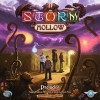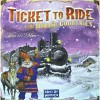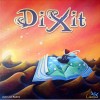
The Games Shopper
gamer level 2
645 xp
645 xp
followers
7
7
Use my invite URL to register (this will give me kudos)
https://boardgaming.com/register/?invited_by=gamesshopper
profile badges
...
...
...
...
recent achievements

Noble
Gain 2 followers
Gain 2 followers

I'm Gettin' the Hang of It
Claim that you have played a game today by clicking the "Played Today!" button on a game page 10 times.
Claim that you have played a game today by clicking the "Played Today!" button on a game page 10 times.

Novice Grader
Grade 20 more reviews or tips by clicking "Yes" or "No" in response to the question "Was this helpful?"
Grade 20 more reviews or tips by clicking "Yes" or "No" in response to the question "Was this helpful?"

My First Game Tip
Submit a game tip, strategy, or house rule.
Submit a game tip, strategy, or house rule.
Player Stats
Critic (lvl 1)
200 xp
200 xp
Explorer (lvl 1)
126 xp
126 xp
Professor (lvl 0)
75 xp
75 xp
Reporter (lvl 0)
75 xp
75 xp
About Me
I'm a habitual gamer and a former game consultant for The Games Shop in Melbourne, Australia. Now that I've returned to Canada, where things don't try to kill me as often, I write for the shop's review site: The Games Shopper.
I love designing and writing, and I'm also a high school teacher when I have time free.































Citadels
I write reviews for a game shop in Australia, but before I was writing I was a consultant selling games face to face. Citadels was my favorite game then, and I still hold it among my top classic choices.
This is an excerpt of my full review, which can be found here:
http://gameshop.com.au/blog/thegamesshopper/2012/11/06/review-citadels/
“Citadels is sometimes known as a game without mercy. It’s heartless and majestic, and it can be infinitely rewarding, but it won’t stop to baby you if you stub your toe or, more accurately, get assassinated and miss your turn. I’ve known people to dislike Citadels because of this, but despite its wrinkled lip and sneer of cold command (literature!) I still find it an exciting and worthwhile game.
In Citadels, you take on the role of a seedy building developer trying to improve your own slummy quadrant of a city that is, in itself, both seedy and slummy. What this translates to is the playing of district cards, each with its own value, until one player has played eight cards, at which time the person with the most points from their districts wins. This is hardly the crux of the game, though. The big idea revolves around the crooked officials who will help you build your rent-controlled hovels.
Each turn, the players each select an official to represent them that turn. There are eight or nine officials in each game, ranging from a greedy Merchant who will get you more money on your turn to a doddering King who procures you the starting player token. But the officials also include disreputable types like a Thief who steals from other players and the dreaded, notorious Assassin who has the power to snuff out entire turns. These more sinister characters are where the game gets its cold reputation. It’s certainly disappointing to plan out an entire turn just to have it denied, but there are ways to avoid the heartache if you don’t telegraph your intentions too much. This is one of the reasons I like Citadels. It’s about bluffing and predicting your opponent’s moves just as much as it is about choosing effective officials for yourself.
To break it right down, Citadels is a very fun game. It’s easy to learn, plays in less than an hour, and there’s also enough variety in the gameplay for it to stay interesting across multiple plays. I also love it with two players, since each player chooses two officials to represent them each turn, maximizing options and lightening the blow of finding some nightshade in your tea. But despite its merits, Citadels is not a game where you’ll come away clean. You will take a few hits. It’s really a game about shrugging off the little blows and dodging the big ones. Be prepared to see the Bishop who helped you so willingly last turn wind up in the pocket of your enemy in the next. Be prepared for the Warlord to destroy your buildings and for the Thief to run off with your wallet. Be prepared for change. Nothing is constant in Citadels. The game has such a message of transience that it’s easy to imagine how even after your masterful victory in which you beautified your slum with universities and wizarding schools and dragon gates with unknown purposes, in a few short years its all going to be dust again, with the lone and level sands stretching far away.